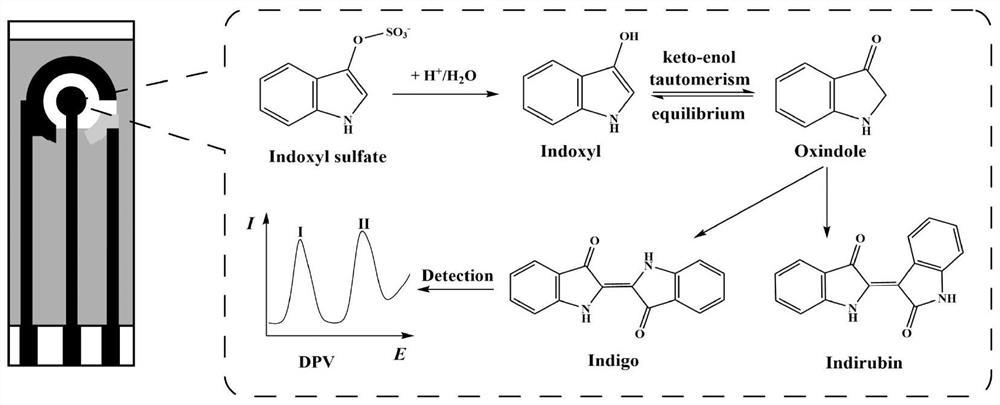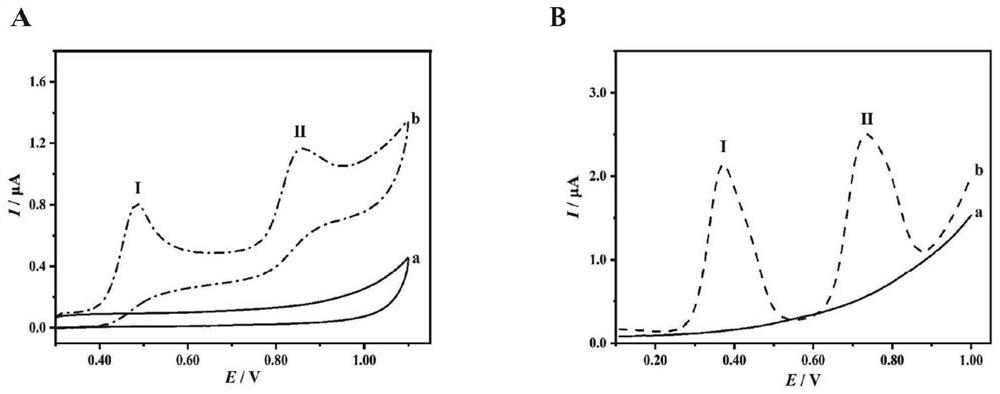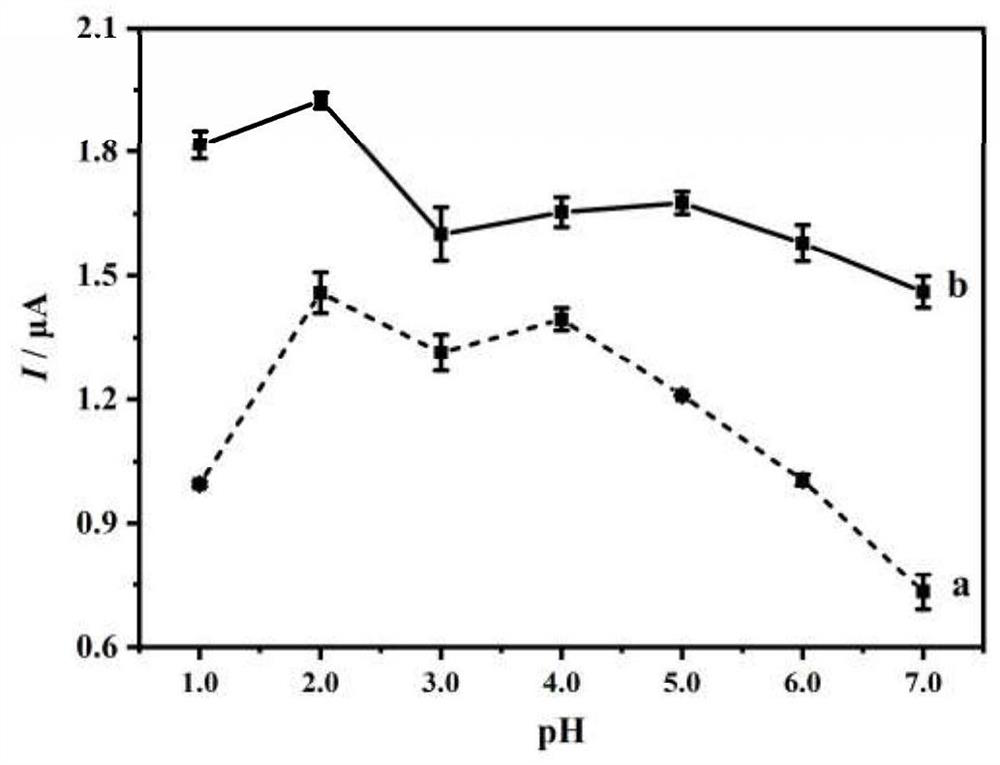Electrochemical method for rapidly detecting plasma indoxyl sulfate
A technology of indoxyl sulfate and a detection method, applied in the field of electrochemical detection, to achieve the effects of simple production process, avoiding energy loss, and avoiding experimental cross-contamination
- Summary
- Abstract
- Description
- Claims
- Application Information
AI Technical Summary
Problems solved by technology
Method used
Image
Examples
Embodiment 1
[0034] Embodiment 1: the preparation of screen printing carbon electrode of the present invention
[0035] The screen printing carbon electrode of the present invention is to sequentially print carbon paste, Ag / AgCl paste and insulating paste on a PET substrate. Specifically include the following steps:
[0036] 1) Clean the PET substrate, print carbon paste on the PET substrate after drying, make carbon working electrode and carbon paste auxiliary electrode, and dry at room temperature;
[0037] 2) printing silver paste containing silver chloride on the above-mentioned PET substrate to make Ag / AgCl reference electrode, and drying at normal temperature;
[0038] 3) Avoid the circular working area, and print insulating paste on the above-mentioned PET substrate to cover the wire;
[0039] 4) The above-mentioned working electrode, auxiliary electrode and reference electrode form a circular working area, and each electrode is connected to the interface through a wire under the ...
Embodiment 2
[0041] Embodiment 2: a kind of electrochemical method for rapidly detecting plasma indoxyl sulfate described in this embodiment, specifically comprises the following steps:
[0042] 1) Add 300 μL of plasma and 900 μL of acetonitrile into 2 mL Ep tubes, vortex for 1 min, let stand for 10 min, then centrifuge at 13300 g for 10 min at 4 °C, and take the supernatant;
[0043] 2) Drying the supernatant obtained in step 1) with nitrogen at 45°C;
[0044] 3) Reconstitute the sample obtained in step 2) with 300 μL of 0.10 mol / L PBS solution at pH 2.0, and vortex for 90 seconds to obtain a reaction mixture;
[0045] 4) Take 50 μL of the reaction mixture obtained in step 3) and drop it on the SPCE. The SPCE is connected to an electrochemical workstation, and DPV technology is used for electrochemical detection. Its parameters are set as follows: low potential 0.1V, high potential 1.0V, pulse width 150mV, pulse width 0.05s, pulse period 0.6s.
[0046] Preferably, the PBS solution is pr...
Embodiment 3
[0048] This embodiment is to investigate the electrochemical behavior of indoxyl sulfate. Using CV to characterize the electrochemical behavior of indoxyl sulfate on SPCE, the detection solution is a PBS solution of 0.10mol / LpH 2.0, and the sweep speed is 50mV / s. The results are as follows figure 2 As shown in A. At 40.0μmol / L indoxyl sulfate, two irreversible oxidation peaks Ⅰ and Ⅱ appeared at 0.485V and 0.862V respectively, and there was no reduction peak (dashed line b). Since the peak potential of oxidation peak I is lower than that of oxidation peak II, low oxidation potential is beneficial to avoid noise interference during the detection process, and the peak current of oxidation peak I is higher than that of oxidation peak II. Considering comprehensively, the peak current value of oxidation peak Ⅰ was used for quantitative analysis of indoxyl sulfate. Further use DPV to characterize the electrochemical behavior of indoxyl sulfate, the detection solution is 0.10mol / L P...
PUM
 Login to View More
Login to View More Abstract
Description
Claims
Application Information
 Login to View More
Login to View More - R&D
- Intellectual Property
- Life Sciences
- Materials
- Tech Scout
- Unparalleled Data Quality
- Higher Quality Content
- 60% Fewer Hallucinations
Browse by: Latest US Patents, China's latest patents, Technical Efficacy Thesaurus, Application Domain, Technology Topic, Popular Technical Reports.
© 2025 PatSnap. All rights reserved.Legal|Privacy policy|Modern Slavery Act Transparency Statement|Sitemap|About US| Contact US: help@patsnap.com



